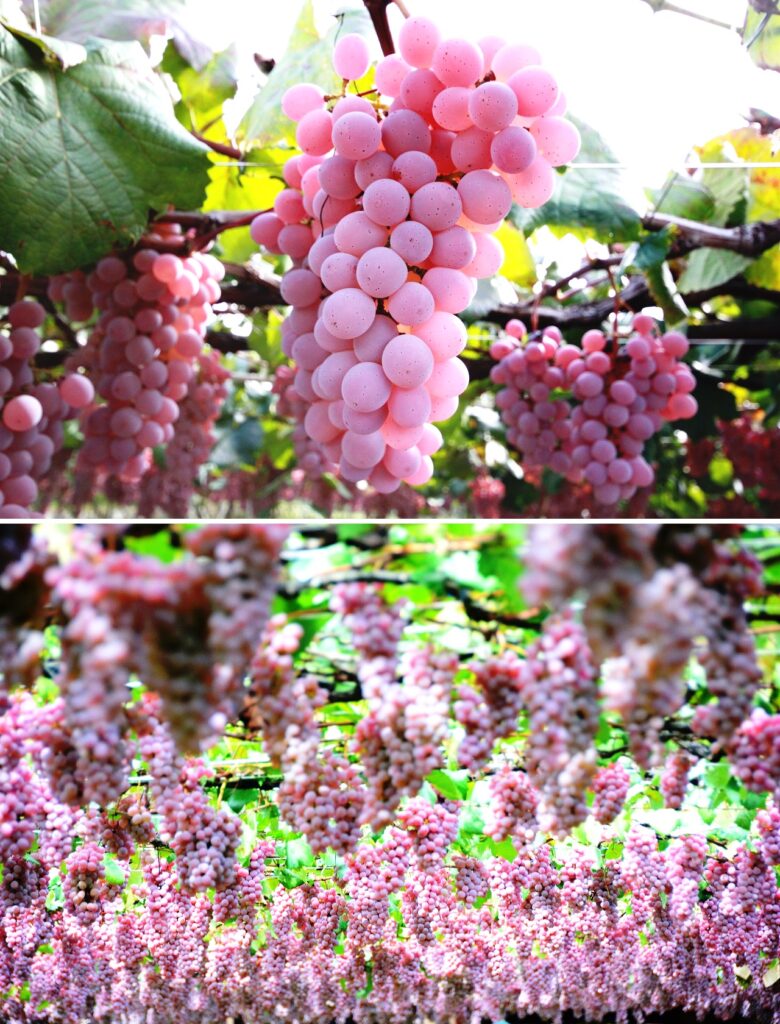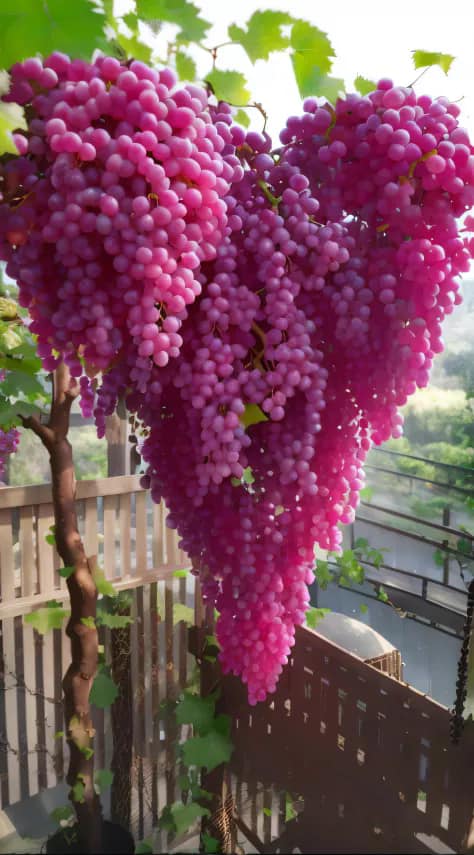The Pink Koshu Grapes represent not just a fruit, but a rich cultural and agricultural heritage emerging from the picturesque landscapes of Yamanashi Prefecture, Japan. These grapes, with their delicate blush hue, have captivated connoisseurs and casual consumers alike, reflecting a unique fusion of tradition and innovation in viticulture. Understanding the Koshu grape’s journey reveals insights into its significance both locally and globally.

Historical Roots of Koshu Grapes
The history of the Koshu grape is steeped in over a millennium of cultivation, believed to be a hybrid between Vitis vinifera and Vitis Davidii. This ancient lineage suggests that these grapes have not only adapted to their environment but also evolved hand-in-hand with Japanese culture.
Tracing the Origins of Koshu Grapes
Koshu grapes are believed to have been cultivated in the Yamanashi Prefecture of Japan for over a thousand years. The region’s temperate climate and diverse terrain provided the ideal conditions for these grapes to thrive. Historically, they may have been cultivated for wine production, potentially giving rise to local varieties that could pair uniquely with traditional Japanese cuisine.

The Impact of Globalization on Koshu Grapes
As globalization burgeoned, these grapes gradually found their way into international markets, inviting intrigue and admiration from oenophiles around the world. The increasing exposure of Koshu grapes to global audiences has led to a growing appreciation for their distinctive characteristics and cultural significance.
Adapting to a Changing World
The resilience and adaptability of Koshu grapes have allowed them to withstand the test of time and the challenges of a rapidly evolving world. Their ability to thrive in the diverse climates of Japan has made them a valuable asset in the face of climate change, offering insights into sustainable viticulture practices.
Unique Characteristics and Appeal
What sets the Pink Koshu grape apart is its exquisite flavor profile and adaptability to Japan’s diverse climate. The grape’s sweetness balances beautifully with a refreshing acidity, making it ideal for crafting wines that embody the essence of their terroir.

Flavor Profiles and Versatility
The Koshu grape’s flavor profile is often described as delicate and refreshing, with notes of citrus, stone fruits, and a subtle floral undertone. This versatility allows the grapes to be used in a variety of wine styles, from crisp, dry whites to lightly sparkling rosés, catering to a wide range of consumer preferences.
Aesthetics and Culinary Allure
The soft pink hues of the Koshu grape berries not only make them aesthetically pleasing but also contribute to their allure as a gourmet ingredient. Imagine plating a dish infused with these grapes—elegance meets flavor, creating a culinary experience that lingers long after the meal.
Global Recognition and Comparative Analysis
The increasing popularity of Koshu grapes in the global wine market has led to comparisons with more renowned varietals like Chardonnay or Sauvignon Blanc. While the Koshu grape may not have the same widespread recognition, its unique qualities have captivated the attention of oenophiles and sommeliers around the world, who are drawn to its distinct terroir and potential for food pairing.

Cultural Significance of Koshu Grapes
In Japanese culture, Koshu grapes are more than mere fruits; they symbolize a deep connection to the land. Festivals celebrating the harvest of these grapes serve as communal gatherings, where locals share stories and traditions passed down through generations.
Celebrating the Koshu Grape Harvest
Festivals celebrating the Koshu grape harvest are important events in the local community, fostering a sense of belonging and pride in the region’s agricultural practices. These gatherings provide a platform for the sharing of stories, traditions, and knowledge, reinforcing the cultural significance of the Koshu grape.
The Koshu Grape in Japanese Aesthetics
The visual appeal of the Koshu grape has also made it a symbol of modern Japanese aesthetics, with social media platforms like Reddit and Facebook buzzing with images and discussions about these captivating fruits. This blend of past and present highlights how the Koshu grape can transcend geographical boundaries, appealing to both traditionalists and contemporary audiences.

Sustainability and Local Economies
The cultural significance of the Koshu grape extends beyond its sensory qualities, as it also represents the importance of sustainable agricultural practices and the preservation of local economies. As consumer preferences shift toward organic and locally-sourced produce, the Koshu grape’s narrative aligns perfectly with these emerging trends, offering a potential pathway for the revitalization of Japanese vineyards and the communities that depend on them.
Implications for the Future
With climate change posing challenges to global viticulture, the resilience shown by the Koshu grape offers a glimmer of hope. Its ability to thrive in Japan’s variable climate suggests potential pathways for adaptation and innovation in grape growing practices worldwide.
Adapting to a Changing Climate
As other regions grapple with evolving conditions, the techniques honed in cultivating Koshu grapes could serve as a model for sustainable agriculture. The Koshu grape’s resilience and adaptability to Japan’s diverse climate offer valuable insights into the potential for developing grape varieties that can withstand the effects of climate change.

Sustainable Agriculture and Local Economies
The burgeoning interest in organic and locally-sourced produce aligns perfectly with the Koshu grape’s narrative. As consumer preferences shift toward sustainable choices, increased demand for these grapes could lead to renewed investment in Japanese vineyards, boosting local economies while preserving age-old practices.
Global Implications and Collaborative Opportunities
The Koshu grape’s journey from a regional delicacy to a globally recognized varietal suggests the potential for cross-cultural exchange and collaboration in the wine industry. As other regions explore the possibilities of adapting to climate change, the lessons learned from the Koshu grape’s cultivation and preservation could inform sustainable viticulture practices worldwide.
Conclusion
As we celebrate the elegance of Pink Koshu grapes, we also embrace the myriad of possibilities they present—not just as a delightful treat, but as a testament to cultural heritage, sustainability, and innovation in the face of change. The Koshu grape’s story is a captivating blend of tradition and modernity, offering a unique perspective on the enduring power of local knowledge and the potential for global collaboration in the pursuit of a more sustainable future.




